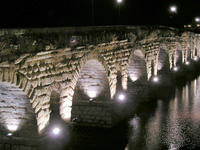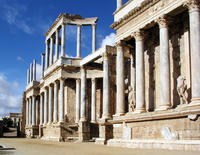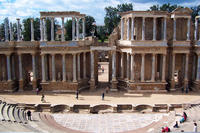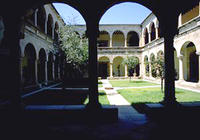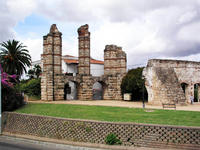You are in: Europe -> Spain -> Archaeological Ensem... , and traditional search or Image Gallery will yield results of this site only
Archaeological Ensemble of Mérida
| Site number: | 664 |
|
| Type of site: | Cultural | |
| Date: | 25 B.C. | |
| Date of Inscription: | 1993 | |
| Location: | Europe, Spain, Province of Badajoz, Autonomous Community of Extremadura | |
Up to 75 images are shown here. Click on each for more details or on Image Gallery for more images.
Six official UN languages:
Arabic,
Chinese,
English,
French,
Russian,
Spanish
Other languages: Catalan, Dutch, Esperanto, Finnish, Galician, German, Greek, Hebrew, Indonesian, Irish Gaelic, Italian, Japanese, Lithuanian, Norwegian-bokmål, Polish, Portuguese, Swedish, Welsh
Other languages: Catalan, Dutch, Esperanto, Finnish, Galician, German, Greek, Hebrew, Indonesian, Irish Gaelic, Italian, Japanese, Lithuanian, Norwegian-bokmål, Polish, Portuguese, Swedish, Welsh
| Description: | The present-day Mérida in Estremadura was the colony of Augusta Emerita; it was founded at the end of the Spanish Campaign in 25 B.C. and acted as the capital of Lusitania. The old city’s well-preserved remains consist of a large bridge crossing the Guadiana, an amphitheatre, a theatre, a huge circus and an outstanding water-supply system. The site wonderfully illustrates a provincial Roman capital during the empire and in the years following. --WHMNet paraphrase from the description at WHC Site, where additional information is available. | |
| Mérida is the capital of the autonomous community of Extremadura, Spain. It was founded in the year 25 BC, with the name of Emerita Augusta (the name Mérida is an evolution of this) by order of Emperor Augustus, to protect a pass and a bridge over the Guadiana river. Two veteran legions were the former settlers: V Alaudae and X Gémina. The city became the capital of Lusitania province, and one of the most important cities in the Roman empire. Mérida preserves more important ancient Roman monuments than any other city in Spain (including a triumphal arch of the age of Trajan); because of this, the "Archaeological Ensemble of Mérida" is a World Heritage site. During the Visigothic period it maintained much of its splendour, especially under the sixth-century domination of the bishops, when it was the capital of Hispania. Bishop Paul brought the diocese great wealth, making it the wealthiest diocese in Spain. Bishop Fidelis rebuilt the cathedral and under the bishop Masona it became the site of the first recorded hospital in Spain. Among the remaining Roman monuments are the Puente Romano, a bridge over the Guadiana river that is still used by pedestrians; an important fortification to defend the bridge, lately used by the Moors, called Alcazaba; the Temple of Diana; the remains of the Forum, including the Arch of Trajan; the remains of the Circus Maximus; the Acueducto de los Milagros (aqueduct); a villa called the Mitreo; the Embalse de Proserpina and Cornalvo reservoirs; the Circus, the Amphitheatre and the Roman Theatre where a summer festival of Classical theatre is presented, usually with versions of Greco-Roman classics or modern plays located in ancient times. One can also visit the Morerías archaeological site and many others all around the city, and watch digging in progress, as well as the Museo Nacional de Arte Romano (by Rafael Moneo).It is necessary to visit also the Santa Maria's Cathedral and the Santa Eulalia's Basilic. --Wikipedia. Text is available under the Creative Commons Attribution-ShareAlike License. | ||
| Source: | http://whc.unesco.org/en/list/664 | |
| Reference: | 1. UNESCO World Heritage Center, Site Page. | |





